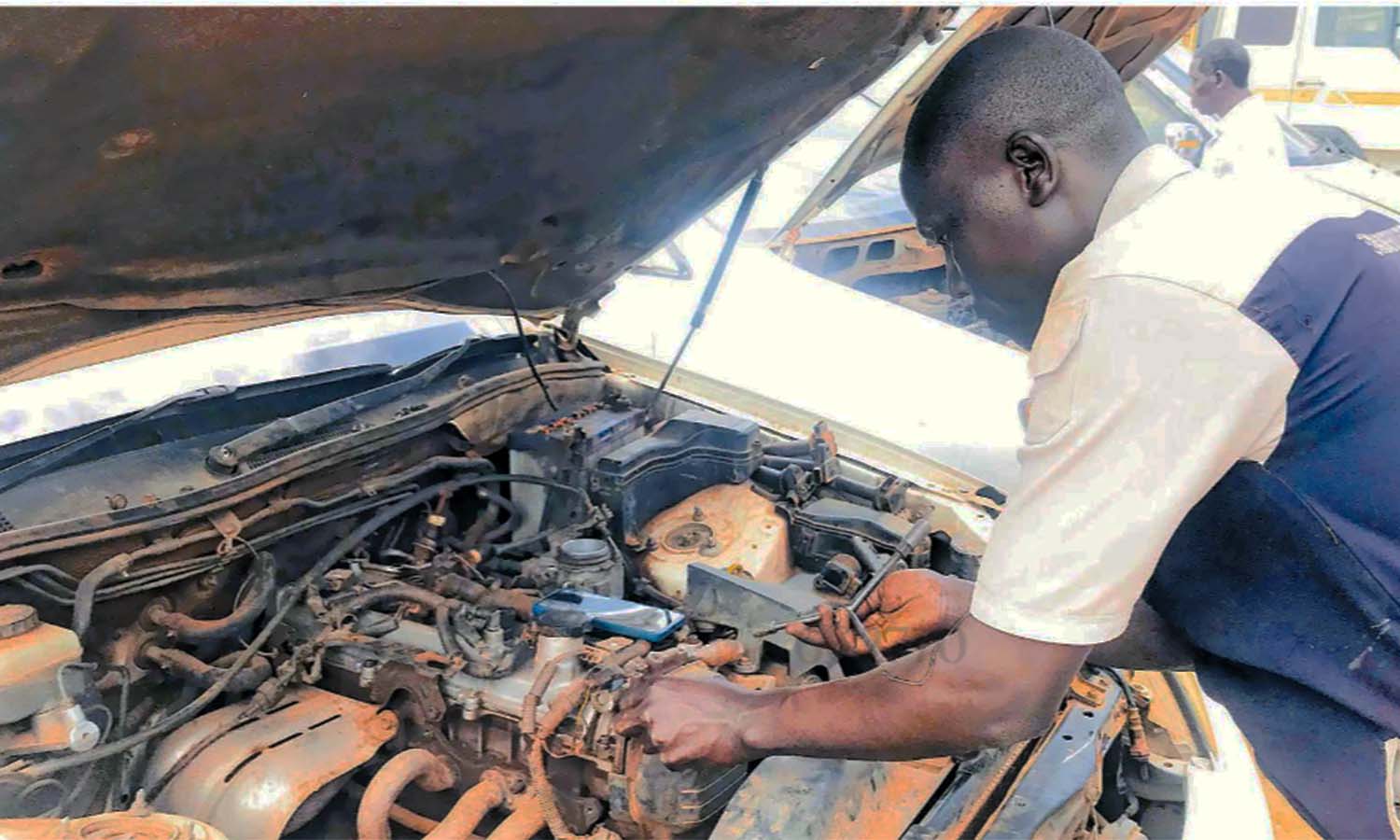Prime
Making good use of the car AC

While the car’s air conditioning system is not known by a number of drivers, it can be operated by anyone with the use of the knobs (above)normally placed on the dashboard and the air will come through the vents (right) which are spread out througout the car. PHOTO BY Joseph Kiggundu
What you need to know:
The car air-conditioning system comes in handy in both hot and cold weather. Gillain Nantume spoke to experts and they explain how it works.
Of late, it has been quite hot. The heat is such that you cannot even feel the soothing effect of that craved cool breeze coming in through the open windows of your car.
So, imagine you are stuck in that traffic jam on Yusuf Lule Road, at 1.30PM. Sweat is dripping out of every pore, your hands are slippery on the wheel, and it feels like the air is so close, you are breathing in hot fumes.
Traffic jams do not easily let up, and you do not have the option of getting out of the car. The easiest and most convenient thing to do is switch on the car air conditioner.
Is it necessary?
Joseph Musoke, a mechanic at Total Petrol Station, Wandegeya, says because a driver must be alert, air conditioning is a must-have.
“If you are driving a distance that will take you more than an hour, you need something that will keep you awake in the humidity of the day; something that will maintain the coolness in the car.”
A hot atmosphere has been known and proven to cause drowsiness. Besides playing loud music, the AC removes the heat, thus keeping you alert.
In cold weather, that AC can warm up your legs so that they remain nimble on the pedals, especially the brakes.
AC and fuel consumption
In the process of removing heat and moisture from the car, energy is used, and this consumes fuel.
Michael Ssekiranda, a mechanic with New Africa Garage, says the effect is mainly felt in smaller cars.
“Small cars, with small engines feel like they have been over loaded when you switch on the AC. They use a lot of power to operate the AC that a driver may feel like 30-40 kilogrammes of something have been loaded in the boot.”
He adds that in cars with 2500cc and above, like Land cruisers, the effect is not felt.
However, Musoke disagrees. “When you change gears, the fuel consumption goes up a bar or two, which is quite minimal. It is the same thing with switching on the AC. Since most people drive on near-empty tanks, they will feel the effect. But if you drive on a full or half-full tank, you cannot feel it.”
Recharging an AC
From time to time, like the oil in an engine, the refrigerant has to be freshened up. If it is really low, then it has to be drained out and replaced.
“Like anything that works for a long time, an AC will breakdown,” says Ssekiranda. “A mechanic will be the best person to inspect the car and see where the problem lies before they can make recommendations to the driver.”
“When a driver notices that the AC does not bring as much coldness as it used to, that is the first indicator that there is a problem,” says Musoke.
This could probably mean that the air cleaner is clogged and it has to be removed and cleaned.
Musoke adds that, “The gas used in an AC is the same as that used in a fridge and it can be refilled. The people who do this usually have detectors that can be used to know how much gas needs to be pumped in.”
A detector is important because sometimes, the gas levels may be low due to leakages. It can also show if the compressor is not functioning.
“Without a detector determining if there is a leakage, you can refill the gas, but will have to keep on doing it every two days.”
Maintaining an AC
Maintaining the AC so that it can work for a long time largely depends on how the driver handles their car. “You cannot tell how long the gas will last,” says Musoke.
“It’s like asking at the petrol station how long cooking gas will last. If you cook beans on it, it will empty quickly. So maintaining the AC depends on how the driver cares for his car.”
Composition of the AC
There are three main parts that have to be in good condition so that the entire system can ran smoothly – the compressor, the condenser, and the evaporator.
When you switch on the AC, it takes a few seconds before you can start to fill a change because the air in the car has to go through these parts.
The compressor is basically a pump. When the air is sucked into this pump, it is put under pressure and forced out into the condenser. The compressor only compresses air, and not liquids.
The condenser works like a radiator – it radiates heat out of the system. The air mixed with the refrigerant enters the condenser as a pressurised gas from the compressor.
A refrigerant is a fluid mixture used in the refrigeration cycle of the air conditioning.
This process creates heat but there are tubes around the condenser that cool the air until it forms a liquid. This liquid is in high pressure form and ready to cool the car.
The evaporator is located in the cabin. Its job is to absorb heat. When the refrigerant enters the evaporator coil, it is at 0 degrees Celsius. It does not freeze at this temperature, but it has a very low boiling point.
The refrigerant then moves out of the evaporator. A fan blowing over the outside of the evaporator coil blows cool air into the pass passenger compartment of the car.
More air is sucked into the compressor, where it is pressurised, starting the whole process again. The evaporator also takes humidity out of the air.
Source: Internet




